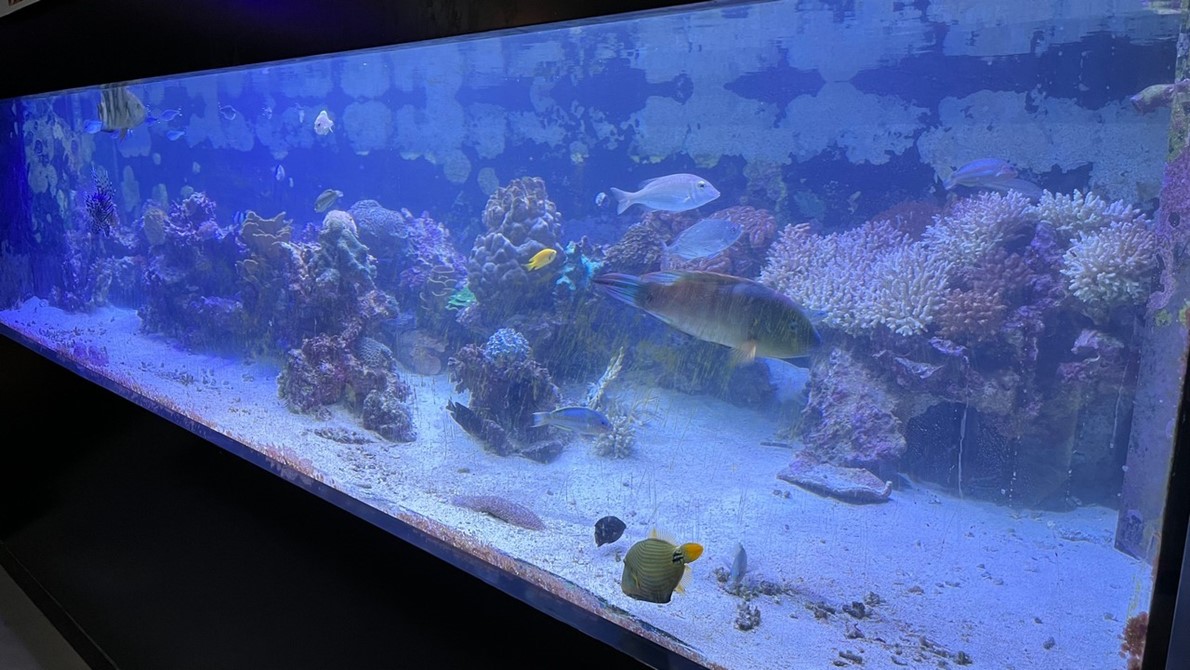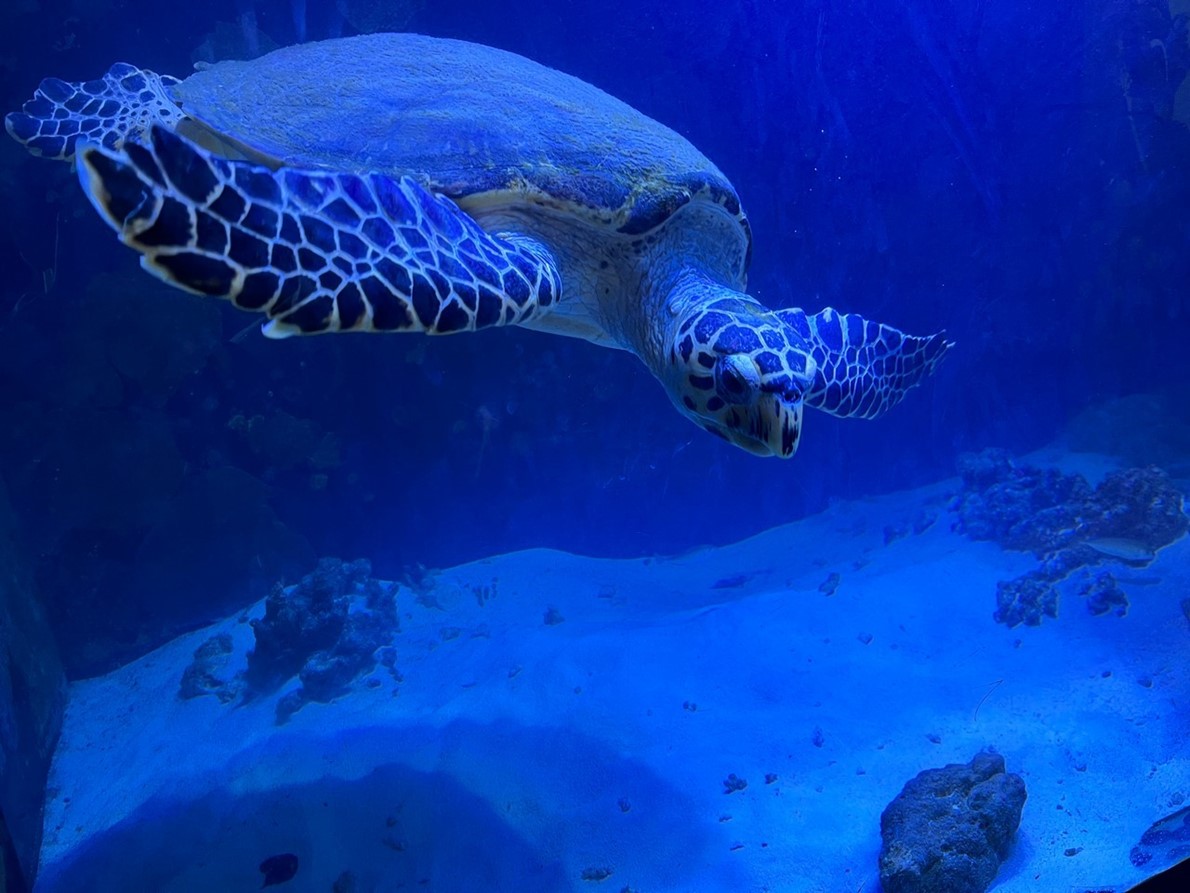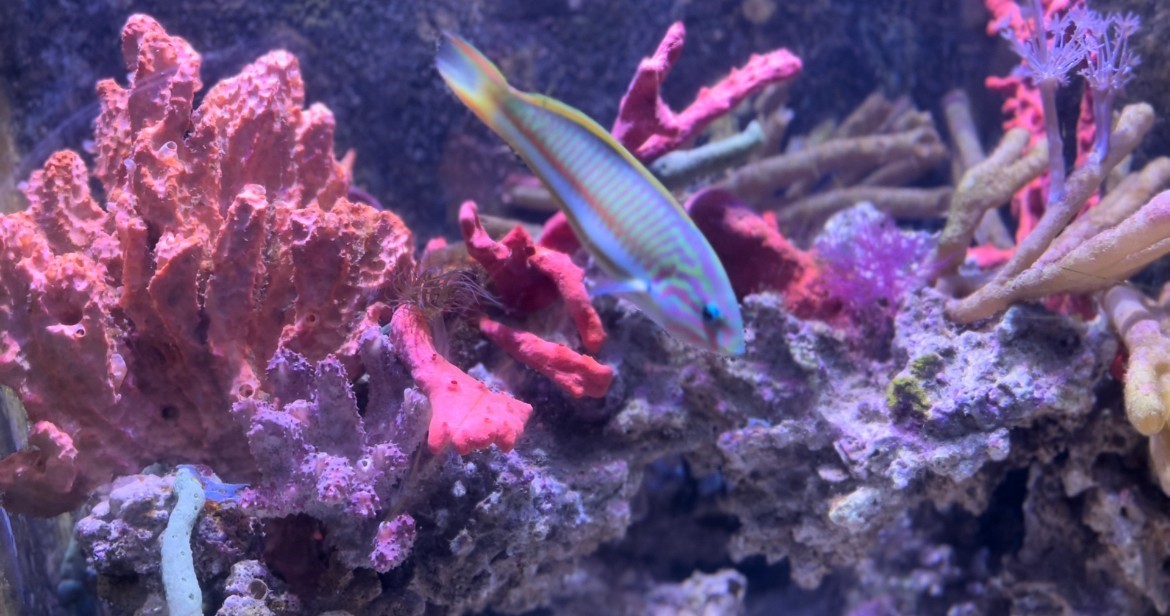Aqaba is known for its diverse environment: from mountainous areas, a sea rich
with marine life, to hotels and resorts that cater to the needs of domestic and
international tourists. Among all the tourist attractions, one place seems to
slip under the radar in discussions about Aqaba.
اضافة اعلان
The
Aqaba Aquarium, located 10km from the city, is a
small yet special exhibit that showcases the distinctive wildlife of the Gulf
of Aqaba and the Red Sea. Visitors can experience a wide variety of sea fauna,
including lionfish, parrotfish, moray eels, turtles, and lethal stonefish,
according to the city’s tourism website.
The aquarium is part of the Marine Science Station
(MSS), a research institute operated by the
University of Jordan and
Yarmouk University. The station, founded in the 1970s, was established to help
scientists and post-graduate students to research the Red Sea’s ecosystem and
to create environmental management projects. Its monitoring programs help
define the environmental baseline characteristics of the Jordanian coast of the
Gulf of Aqaba, according to the MSS’ website.

Initially, the exhibit was used to house the
wildlife being studied by researchers at the science station, but they quickly
realized the public’s curiosity was piqued, and curious passers-by would come
and visit the fish.
In 1980, the facility became an aquarium and opened
to the public. Entrance fees were introduced; JD0.5 for children aged 6–12, JD1
for Jordanians and residents, and JD7 for foreigners.
The aquarium draws 80,000 visitors each year, the
majority of whom — 80 percent — are Jordanian tourists. Only 10 percent of the
visitors are foreigners. Children also comprise half of all visitors.
 Jordan News
Jordan News interviewed Dr Ali Al-Sawalmih,
the MSS’ director and an associate professor of marine physics at the
University of Jordan, who said that the aquarium was created to allow “locals
to enjoy the beauty of life under the sea without diving”. According to the
director, the exhibit is the only non-commercial aquarium in the country,
adding that visitors often misunderstand the primary purpose of the facility,
which remains research and not business.
“The reviewers and visitors have high expectations;
they expect something bigger and different,” the director said, adding that
what makes the exhibit special is not its size or scale, but that the animals
on display are specific to the
Gulf of Aqaba and the Red Sea.
Populating the aquarium, which is still used to
house fauna being studied by the MSS, comes with a host of challenges, foremost
of which is the environments of the tanks used to house the animals. Every
enclosure is expected to mirror the occupants’ natural environment as closely
as possible, Sawalmih explained. The variables involved include everything from
water temperature and salinity to the variety and placements of plants in the
tank. Furthermore, ensuring the health of the animals and their enclosure’s
upkeep is a continuous endeavor.

The majority of the aquarium’s residents are
specific to the region, the director said. The MSS’ dive teams work seasonally,
in order to target specific animals that travel to the area within certain time
frames.
“There is no specific theme of the types of animals
that they catch for the exhibit, but they prioritize catching those which are
high in quantity and are by no means considered endangered or close to
extinction,” Sawalmih said. Despite this assurance, the director did concede
that at least one of the aquarium’s residents, a hawksbill sea turtle, is
categorized as “critically endangered” and is being showcased to raise
awareness, for study, and for protection.
Occasionally, there are places that one stumbles
upon, often spontaneously, that are, simply put, underrated. The
Aqaba Aquarium
at the Marine Science Station, though small, derives its significance not from
its size or grand scale, but rather from its vital mission and the opportunity
it provides to see more unique and distinctive sea animals.
Only 10km from the city center, and on the road
toward Tala Bay, visitors should consider a pit stop at the only non-commercial
aquarium in Jordan.
Read more Around and Jordan
Jordan News




